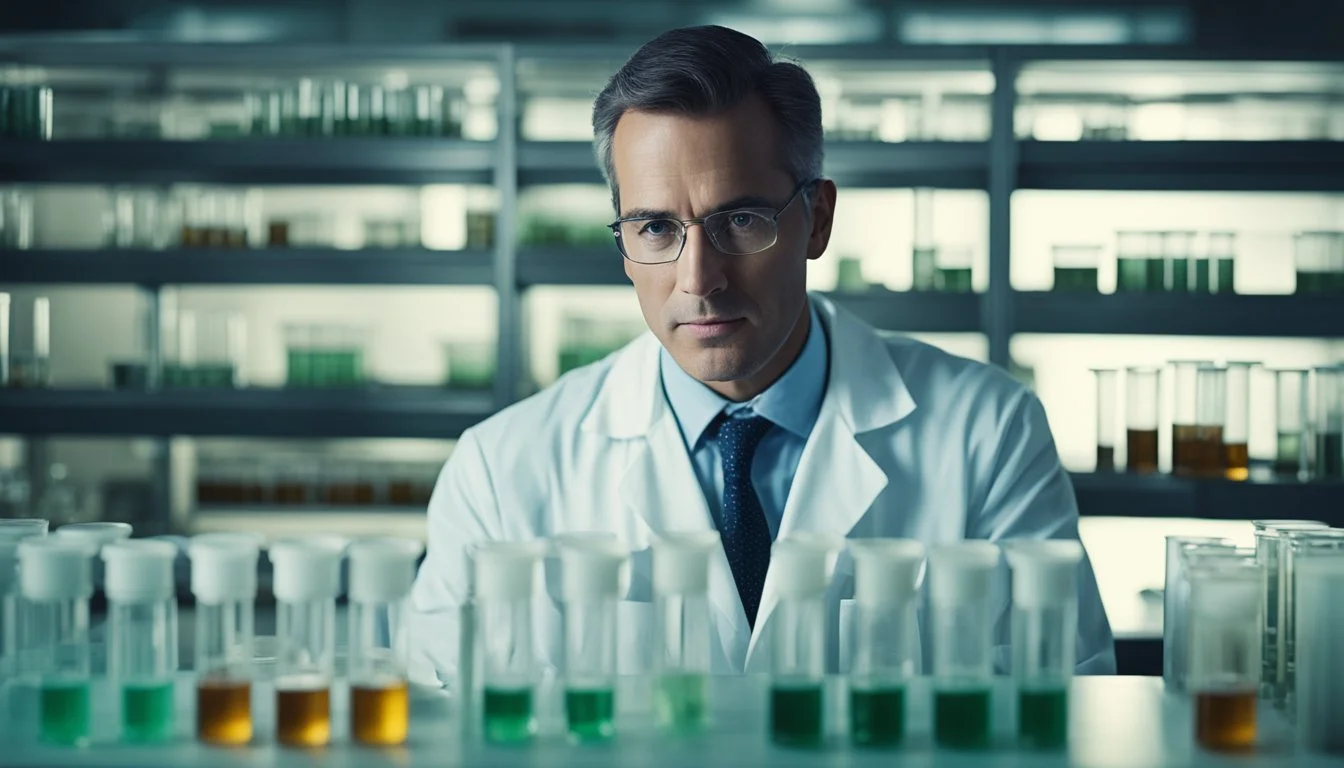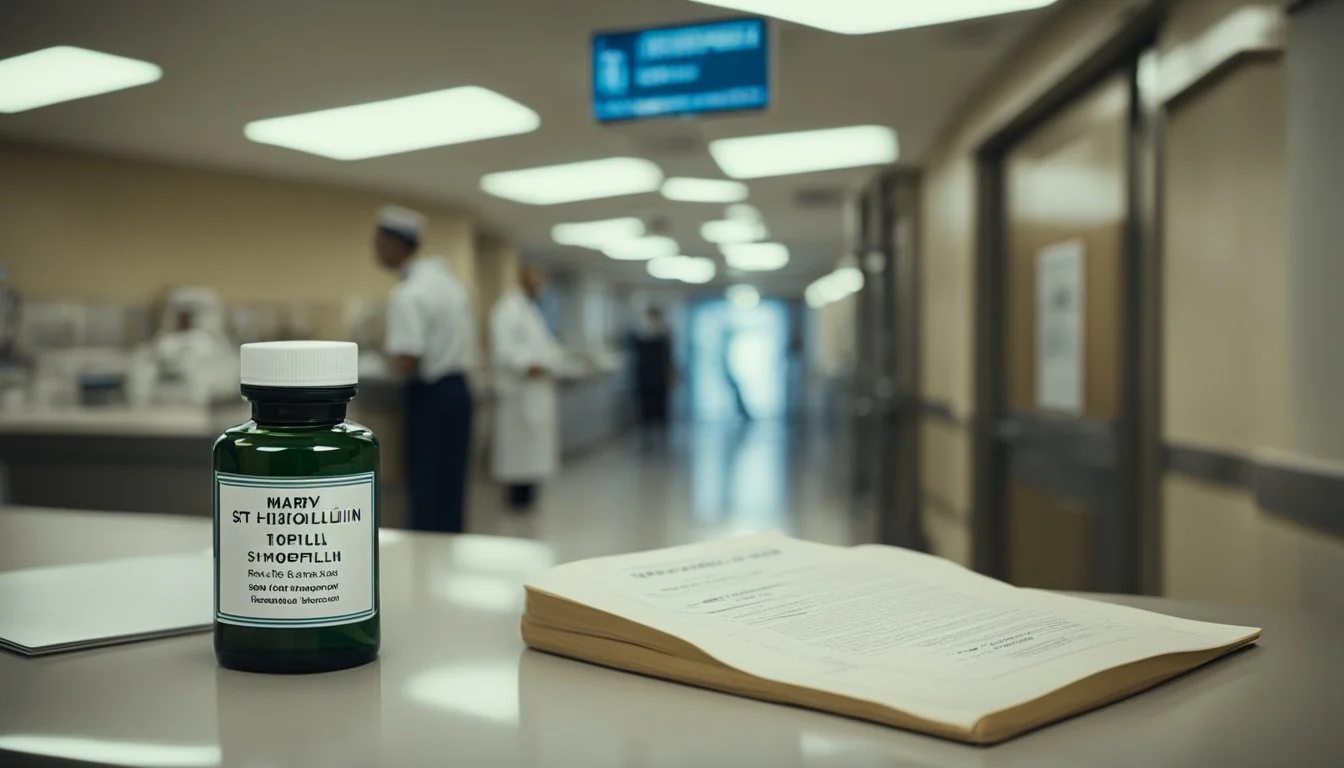5 Fascinating Documentaries on the Discovery of Penicillin
Unveiling Medical History's Game-Changer
The discovery of penicillin stands as one of the most significant breakthroughs in medical history. This groundbreaking antibiotic revolutionized the treatment of bacterial infections and saved countless lives. Documentaries exploring the story behind penicillin's discovery offer valuable insights into the scientific process and the impact of this medical marvel.
Alexander Fleming's accidental discovery in 1928 marked the beginning of a fascinating journey that transformed modern medicine. From Fleming's initial observation to the development and mass production of penicillin, the story involves unexpected twists, dedicated researchers, and the urgency of World War II. These documentaries shed light on the key figures and events that shaped this pivotal chapter in medical science.
1) Alexander Fleming's Accidental Discovery
Alexander Fleming's discovery of penicillin in 1928 was a serendipitous event that changed the course of medical history. The Scottish bacteriologist was working at St. Mary's Hospital in London when he noticed something unusual on a culture plate.
Fleming had left a stack of Petri dishes containing Staphylococcus bacteria cultures on his lab bench while he went on vacation. Upon returning, he found that one of the plates was contaminated with a mold.
Surprisingly, the area around the mold was clear of bacteria. This observation piqued Fleming's curiosity, leading him to investigate further. He identified the mold as belonging to the genus Penicillium.
Fleming's accidental discovery revealed the world's first antibiotic. He named the substance penicillin and published his findings in 1929. However, it would take over a decade and the work of other scientists to develop penicillin into a usable drug.
This chance event demonstrates how scientific breakthroughs can sometimes arise from unexpected sources. Fleming's keen observation and follow-up research laid the groundwork for a medical revolution that has saved countless lives.
Learn more about Alexander Fleming's discovery
2) Howard Florey's Development Efforts
Howard Florey played a crucial role in transforming penicillin from a laboratory curiosity into a life-saving drug. His work at the University of Oxford in the late 1930s and early 1940s was instrumental in developing penicillin for medical use.
Florey assembled a talented research team, including Ernst Chain and Norman Heatley. They focused on isolating and purifying penicillin to make it suitable for human treatment.
The team faced numerous challenges, including limited funding and wartime restrictions. Despite these obstacles, they persevered in their efforts to produce penicillin in larger quantities.
In 1941, Florey and his colleagues conducted the first clinical trials of penicillin on humans. The results were promising, demonstrating the drug's effectiveness against bacterial infections.
Florey's work caught the attention of the U.S. government, leading to collaborations with American pharmaceutical companies to scale up penicillin production. This partnership was crucial in making the antibiotic widely available.
For his contributions to the development of penicillin, Florey shared the 1945 Nobel Prize in Physiology or Medicine with Alexander Fleming and Ernst Chain.
3) Ernst Boris Chain's Contributions
Ernst Boris Chain played a crucial role in the development of penicillin as a therapeutic drug. In 1939, Chain discovered Alexander Fleming's 1929 paper on penicillin while working at Oxford University.
Chain proposed to his supervisor, Howard Florey, that they isolate and study the compound. This decision set in motion a series of events that would revolutionize medicine.
Chain's expertise in biochemistry was instrumental in purifying and stabilizing penicillin. He developed methods to extract and concentrate the antibiotic, making it suitable for clinical use.
Together with Florey, Chain conducted the first clinical trials of penicillin. Their work demonstrated the drug's effectiveness against various bacterial infections.
Chain's contributions were recognized with the Nobel Prize in Physiology or Medicine in 1945, which he shared with Fleming and Florey. His work helped transform penicillin from a laboratory curiosity into a life-saving medication.
4) The Beginnings at St. Mary's Hospital
Alexander Fleming began his medical career at St. Mary's Hospital Medical School in London in 1901. He excelled in his studies, earning the gold medal as the top medical student in 1908.
After graduating, Fleming remained at St. Mary's as a lecturer. This decision proved pivotal for his future discoveries. The hospital's environment fostered his curiosity and research interests.
In 1928, Fleming returned from a vacation to find an unusual occurrence in his laboratory at St. Mary's. He noticed a mold growing on one of his culture plates, surrounded by an area where bacteria could not grow.
This chance observation in the St. Mary's laboratory led to Fleming's groundbreaking discovery of penicillin. The hospital's facilities and academic atmosphere provided the ideal setting for this momentous finding.
St. Mary's Hospital continues to honor Fleming's legacy. A museum dedicated to his work now stands on the site where he made his famous discovery, preserving this important piece of medical history.
5) Penicillin's World War II Impact
Penicillin played a crucial role during World War II, saving countless lives on the battlefield. Its mass production became a top priority for Allied forces, recognizing its potential to change the course of the war.
The antibiotic dramatically reduced death rates from bacterial infections. In World War I, bacterial pneumonia had an 18% mortality rate. This dropped to less than 1% in World War II thanks to penicillin.
Penicillin's effectiveness in treating wounded soldiers was remarkable. It prevented many deaths from infected wounds and allowed faster recovery times, enabling troops to return to duty more quickly.
The race to produce penicillin in large quantities became known as the "penicillin project." It involved collaboration between pharmaceutical companies, government agencies, and academic institutions.
By D-Day in 1944, penicillin production had increased significantly. Allied medics were well-supplied with the drug, giving wounded soldiers a much better chance of survival compared to earlier in the war.
Penicillin's success during World War II led to its widespread availability after the war ended in 1945. This marked the beginning of the antibiotic era in modern medicine.
The Accidental Discovery
Penicillin's discovery in 1928 was a serendipitous event that revolutionized medicine. This groundbreaking antibiotic emerged from an unexpected contamination in a laboratory, leading to one of the most important medical breakthroughs of the 20th century.
Alexander Fleming's Role
Alexander Fleming, a Scottish bacteriologist, played a crucial role in penicillin's discovery. While working at St. Mary's Hospital in London, Fleming left for a vacation in August 1928. Upon returning in September, he noticed something unusual in one of his petri dishes containing Staphylococcus bacteria.
The dish had been contaminated with a blue-green mold, which Fleming identified as belonging to the Penicillium genus. Intriguingly, he observed that the area around the mold was clear of bacteria. This observation sparked Fleming's curiosity and led to further investigation.
Initial Observations
Fleming's keen eye and scientific acumen allowed him to recognize the significance of what he saw. He cultured the mold and found that it produced a substance capable of killing various disease-causing bacteria. Fleming named this substance "penicillin" after the Penicillium mold.
He conducted experiments to determine penicillin's effectiveness against different types of bacteria. Fleming found it particularly potent against gram-positive pathogens, including those responsible for scarlet fever, pneumonia, and other serious infections.
Despite recognizing penicillin's potential, Fleming faced challenges in isolating and producing it in sufficient quantities for clinical use. It would take over a decade and the efforts of other scientists to develop penicillin into a widely available antibiotic.
Impact on Medicine
Penicillin's discovery revolutionized medical treatment and saved countless lives. This remarkable antibiotic fundamentally changed how doctors approached infectious diseases.
Revolutionizing Antibiotic Treatment
Penicillin ushered in a new era of medicine. It provided an effective treatment for previously deadly bacterial infections. Diseases like pneumonia, scarlet fever, and syphilis became curable.
Penicillin's success led to the development of many other antibiotics. This expanded the arsenal of drugs available to fight infections. Doctors could now treat a wide range of bacterial diseases quickly and effectively.
The antibiotic also transformed surgical practices. It reduced the risk of post-operative infections, making many procedures safer. This allowed surgeons to perform more complex operations with greater confidence.
Saving Millions of Lives
Penicillin's impact on mortality rates was profound. It dramatically reduced deaths from bacterial infections. During World War II, the antibiotic saved thousands of soldiers' lives by treating wound infections.
In the civilian world, penicillin's effects were equally significant. Childhood mortality rates dropped sharply. Previously fatal infections became manageable. Life expectancy increased as a result.
The antibiotic's ability to cure syphilis had far-reaching public health implications. It helped control the spread of this sexually transmitted disease. This, in turn, prevented numerous cases of severe neurological and cardiovascular complications.
Production Challenges
Scaling up penicillin production from laboratory experiments to industrial-scale manufacturing presented significant hurdles. Scientists and engineers had to overcome technical difficulties and resource limitations to meet growing wartime demand.
Scaling Up
Early penicillin production yielded only small amounts from surface cultures. Researchers developed deep-tank fermentation methods to increase output. This involved growing Penicillium mold submerged in large vats of nutrient broth. Engineers designed specialized equipment for stirring, aerating, and temperature control.
Strain selection was crucial. Scientists screened thousands of Penicillium samples to find high-yielding variants. Genetic modification and mutation techniques enhanced productivity further. X-ray radiation created mutant strains with improved penicillin synthesis.
Purification posed another challenge. Initial extraction methods were inefficient and labor-intensive. Improved techniques like freeze-drying and chemical separation increased yields and purity.
Addressing Supply Shortages
Wartime needs created urgent demand for penicillin. Pharmaceutical companies rapidly expanded production facilities. The U.S. government coordinated efforts, providing funding and resources.
Raw material shortages hindered scale-up. Corn steep liquor, a key ingredient, was in short supply. Scientists found substitutes like lactose and phenylacetic acid. Recycling programs collected used penicillin vials to recover traces of the drug.
Distribution logistics required careful planning. Penicillin's instability necessitated cold storage and quick transport. The military developed portable refrigeration units for battlefield use. Lyophilization (freeze-drying) extended shelf life, allowing stockpiling and easier shipping.
Modern Day Relevance
Penicillin remains a cornerstone of modern medicine, nearly a century after its discovery. It continues to save countless lives by treating bacterial infections effectively.
The development of penicillin paved the way for numerous other antibiotics. This led to a revolution in healthcare, allowing doctors to combat previously deadly diseases.
Penicillin's discovery also sparked advancements in drug research and development. It set new standards for pharmaceutical innovation and clinical trials.
In agriculture, penicillin found applications beyond human health. Adding it to animal feed improved food conversion efficiency and increased weight gain in livestock.
However, the widespread use of antibiotics has led to new challenges. Antibiotic resistance has emerged as a significant global health concern, prompting ongoing research into new treatments.
Penicillin's story serves as an inspiration in scientific research. It demonstrates how accidental discoveries can lead to groundbreaking advancements in medicine and science.
The ongoing relevance of penicillin underscores the importance of continued investment in medical research. It highlights the potential for future discoveries that could revolutionize healthcare once again.


